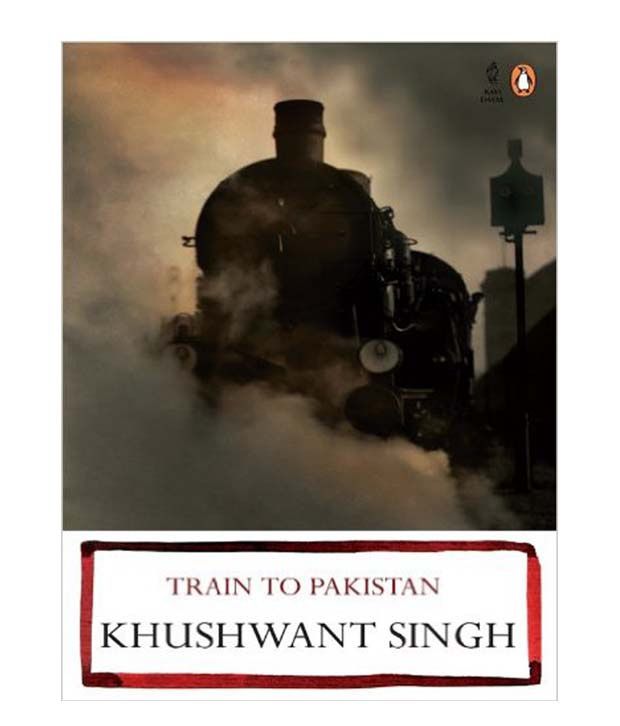

Khushwant Singh expresses his anger over the violation of the long-cherished Indian values over the communal riots that occurred over the process of the Partition of United British India into India and Pakistan. The Partition of India is the gloomiest occurrence in British India, which attracted the attention of several writers, poets, and novelists who portrayed it in their respective works. This book's considerable merit is that it brings together and analyzes a great deal of cultural material on the experience of railways in India about which we have always known but.This research paper aims to explore “Dacoity”, “Kalyuga” (the Age of Downfall), “Mano-Maira” (Dirty-Mind) and “Karma” (Deeds) in “Train to Pakistan”, an epoch-making novel inscribed by Khushawant Singh and critically analyse those four phases in the fiction. Going from early images of disaster and accidents to recent portraits of terrorism on trains, it concludes with a reading of railways as a cultural metaphor of modernity in India. The book concludes with a thoughtful chapter on railways and terror. However, the analysis is too quick as the author moves swiftly from one film to another, paying inadequate attention to cinema as a form. The author discusses the train as a gendered space, a place of romance and peril in several films, with the focus centering on more recent films. The last substantive chapter-and perhaps the least satisfying one-is on trains and Hindi cinema. On one side is the heroic image of mobility and national development, but on the other are the ambivalent and contradictory experiences brilliantly captured in the cinema of Satyajit Ray and in the prose of writers such as Phanishwar Nath Renu and R.

Chapter 4 carries forward this story of contradictory modernity into postcolonial India. The author examines these to show the other side of modernity's portrait, highlighting its contradictory cultural life.
Khushwant Singh's classic, Train to Pakistan (1956), captures the deathly image of railways during Partition. During the carnage that accompanied this event, trains became associated with the images of displacement and violence. In poetry, drama, and political and economic essays by Indian writers, trains appeared as an instrument of imperial domination, a machine devoid of moral truth.Ĭhapter 3 is a fascinating reading of images produced during the partition of British India in 1947. The following chapter describes the Indian response to the colonial discourse. Describing the place that the railways occupied in the colonial imagination, its principal focus is on Rudyard Kipling and Flora Annie Steel, who saw in trains the means for the realization of a rational utopia. After an introduction that lays out the general argument regarding modernity, technology, and society, it begins with a chapter about the colonial discourse on railways. The book consists of five substantive chapters. As the technological images of mobility shaped the substance of modern experience in colonial and postcolonial India, they also brought into view its contradictions, including what the author calls the "counternarratives of modernity." It argues that railways symbolically related modernity and mobility more clearly than any other means of transportation. Analyzing the representations of railways from colonial to postcolonial India, it offers a set of reflections on their role in composing the images of modernity. Tracking Modernity provides a signal service in this regard, bringing to our notice the richness of the railways' cultural history. This is surprising in view of the wealth of cultural representations in literature, journalism, photographs, and cinema. The cultural history of the railways has received scant consideration, except for Laura Bear's Lines of the Nation (2007). But much of the scholarship is on the political, economic, and technological aspects. Upon taking over this territory in 1947, the new nation-state also assumed control over the railways, using it for national modernization.īecause of its central role in the configuration of modern India, the railways have long attracted scholarly attention. It was on this technologically produced space that Indian nationalism laid its claims. Along with other technologies, such as telegraphs and irrigation works, the railways engineered the space of modern India into existence. Running through tunnels cut into rocky plateaus and steaming over bridges built across rivers, the railroads served the economic and security interests of the British Raj in India. By 1910, India had 30,627 miles of track, making it the fourth largest network in the world. A twenty-one-gun salute marked this first train journey in India. On 16 April 1853, a train with fourteen carriages left Bombay for Thane.


 0 kommentar(er)
0 kommentar(er)
